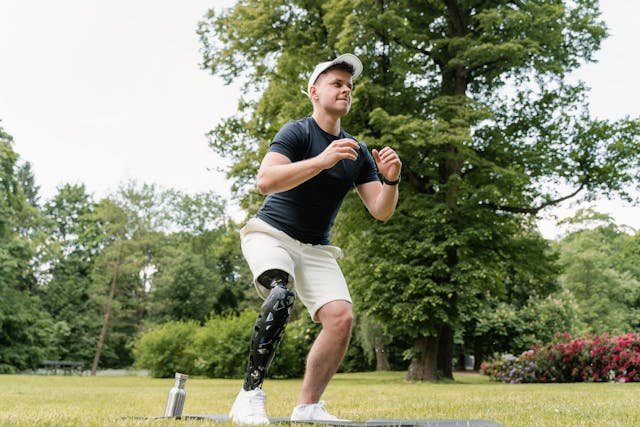For below-elbow amputees, choosing the right prosthetic arm is a crucial step toward regaining independence and functionality. Two of the most commonly used prosthetic options are body-powered prosthetics and myoelectric prosthetics. Each type offers unique benefits and challenges, and the best choice depends on factors like lifestyle, activity level, and personal preferences.
Body-powered prosthetics use a system of cables and harnesses that respond to shoulder or upper-arm movements to control the prosthetic hand. Myoelectric prosthetics, on the other hand, use electrical signals from the user’s muscles to operate an advanced, motorized hand. Both options provide different levels of control, durability, and usability. Understanding their differences can help amputees make an informed decision based on their specific needs.
In this guide, we will explore how each type of prosthetic works, their advantages and limitations, and how to determine the best fit for different users.
How Body-Powered Prosthetics Work
Body-powered prosthetics are a reliable and durable option for below-elbow amputees. These prosthetics use cables and a harness system that translate upper-body movements into mechanical hand actions.
The Mechanism Behind Body-Powered Prosthetics
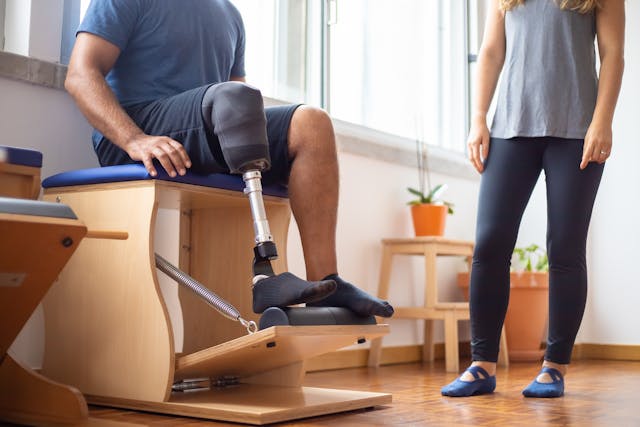
A body-powered prosthetic is controlled by shoulder and arm movements. A cable system is attached to a harness that goes around the user’s shoulders or upper torso. When the user moves their shoulder or upper arm, the tension in the cable activates the prosthetic hand, allowing it to open and close or perform basic gripping actions.
Since body-powered prosthetics rely on mechanical force rather than electronics, they do not require batteries or external power sources. This makes them a dependable solution, especially for users who need a prosthetic for heavy-duty work or outdoor activities. The system is straightforward, allowing users to develop consistent and predictable control over time.
Advantages of Body-Powered Prosthetics
One of the biggest advantages of body-powered prosthetics is their durability and reliability. These devices can withstand tough conditions, making them ideal for users who engage in manual labor, outdoor activities, or sports. Since they do not rely on electronics, body-powered prosthetics require less maintenance and are less expensive than myoelectric options.
Another key benefit is strong sensory feedback. Users can feel the tension in the cables when gripping objects, allowing them to judge the amount of force they are applying. This enhances control and makes it easier to handle delicate objects without dropping or crushing them.
Additionally, body-powered prosthetics are generally lighter than myoelectric hands. Since they do not contain batteries or motorized components, they put less strain on the residual limb, making them comfortable for all-day use.
Limitations of Body-Powered Prosthetics
Despite their strengths, body-powered prosthetics also have some limitations. Since they require shoulder and upper-arm movement to function, users may experience fatigue or discomfort after extended use. The harness system can sometimes feel restrictive, especially during overhead movements or complex tasks.
Body-powered prosthetics also offer limited grip patterns and movements. Unlike myoelectric hands, which can perform multiple types of grips, body-powered prosthetic hands usually have a basic open-and-close function. This makes them less ideal for activities that require fine motor skills or precise hand positioning.
Additionally, while body-powered prosthetics are strong and functional, they may not be as aesthetically appealing as myoelectric options. Many models have a mechanical or hook-style appearance, which some users may prefer to avoid.
How Myoelectric Prosthetics Work
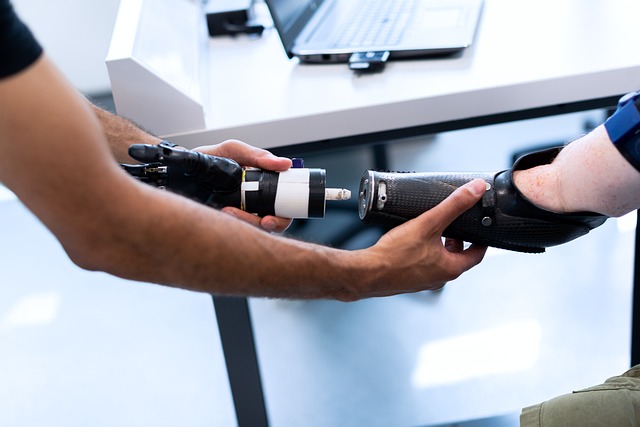
Myoelectric prosthetics use electrical signals from the user’s muscles to control a motorized prosthetic hand. These advanced devices allow for more natural and intuitive movements, providing better functionality for daily tasks.
The Technology Behind Myoelectric Prosthetics
A myoelectric prosthetic detects electrical activity from muscles in the residual limb. Small electrodes placed inside the socket pick up muscle contractions and send signals to a microprocessor, which then controls the movements of the prosthetic hand.
For example, when a user flexes specific muscles, the prosthetic hand may close into a fist. When they relax or contract another muscle group, the hand can open, rotate, or switch to different grip patterns. This system allows for greater precision and a wider range of motion compared to body-powered prosthetics.
Since myoelectric prosthetics are battery-operated, they provide a motorized, hands-free experience. Users do not need to rely on shoulder or upper-arm movements to control the hand, which reduces physical strain and allows for a more natural range of motion.
Advantages of Myoelectric Prosthetics
One of the biggest advantages of myoelectric prosthetics is their multi-grip functionality. Many advanced models allow users to switch between different grip patterns, such as a power grip, pinch grip, lateral pinch, and fine motor grip. This enables users to perform delicate tasks like holding a pen, using a smartphone, or handling fragile objects.
Myoelectric prosthetics also offer a more natural and intuitive control system. Since movements are controlled by muscle contractions, users do not need to rely on body harnesses or cables. This reduces physical strain, making myoelectric prosthetics a comfortable choice for extended use.
Additionally, aesthetic design is a major benefit. Many myoelectric hands look more realistic and can even be designed to match the user’s skin tone. This makes them a popular choice for individuals who prioritize cosmetic appearance along with function.
Limitations of Myoelectric Prosthetics
Despite their advanced features, myoelectric prosthetics have some drawbacks. Since they are battery-powered, they require regular charging and maintenance. If the battery runs out, the prosthetic will not function until recharged, which can be inconvenient for users who rely on their prosthetic throughout the day.
Myoelectric prosthetics are also more expensive than body-powered alternatives. The technology, sensors, and motorized components increase the overall cost, making them a significant financial investment. While some insurance plans cover myoelectric prosthetics, affordability can be a challenge for some users.
Additionally, myoelectric hands lack direct sensory feedback. Since they do not provide the same tactile resistance as body-powered prosthetics, users may need time to adjust to gripping objects without crushing or dropping them. Some modern models are now incorporating haptic feedback technology, but this feature is not yet widely available.
Which Prosthetic is Right for You?
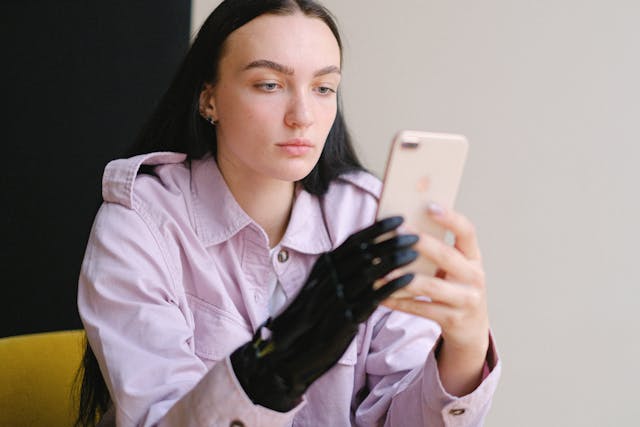
Deciding between body-powered and myoelectric prosthetics depends on individual needs, lifestyle, and priorities.
Factors to Consider When Choosing a Prosthetic
If you need a durable and low-maintenance prosthetic for manual labor, outdoor work, or high-impact activities, a body-powered prosthetic may be the best choice. These prosthetics offer strong grip force, reliable performance, and minimal maintenance requirements.
If you prioritize advanced functionality, natural movement, and aesthetic appearance, a myoelectric prosthetic may be the better option. These prosthetics allow for multiple grip patterns, intuitive control, and a more natural-looking hand, making them ideal for office work, social interactions, and fine motor tasks.
Some individuals may also choose a hybrid approach, using a body-powered prosthetic for physically demanding activities and a myoelectric prosthetic for everyday tasks. Consulting with a prosthetist can help determine the best fit based on your daily activities, goals, and comfort level.
Adapting to Your Chosen Prosthetic: Training and Rehabilitation
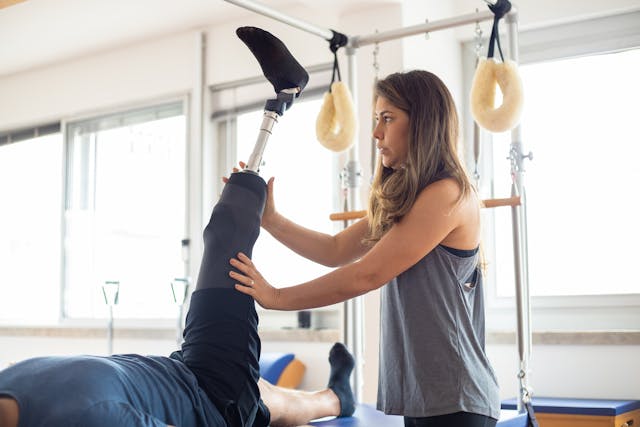
Once a below-elbow amputee selects a prosthetic—whether body-powered or myoelectric—the next critical step is learning how to use it effectively. Proper training and rehabilitation play a vital role in ensuring a smooth transition and maximizing the prosthetic’s functionality. While both types of prosthetics require practice, the learning process varies based on their unique control systems.
Building Strength and Coordination for Body-Powered Prosthetics
Since body-powered prosthetics rely on shoulder and upper-body movement to control the hand, new users often need to strengthen key muscle groups. In the beginning, activating the prosthetic may feel unnatural, but consistent practice helps develop better coordination and control.
One of the first exercises taught in rehabilitation is cable tension control. Users learn how to adjust their shoulder and arm movements to pull the cable with the right amount of force. This helps them open and close the prosthetic hand smoothly without excessive strain. Over time, they develop muscle memory, allowing movements to become more automatic and efficient.
Another important skill is learning grip force adjustment. Since body-powered prosthetics provide direct sensory feedback through the cable system, users must practice gripping objects with varying amounts of pressure. This training prevents accidental crushing of delicate objects or losing grip on heavier items.
Mastering Muscle Control for Myoelectric Prosthetics
For myoelectric prosthetic users, the focus is on muscle signal training. Since these prosthetics operate by detecting electrical impulses from residual limb muscles, users must learn which muscles to contract and how much force to apply.
Early training involves biofeedback exercises, where users practice flexing different muscle groups while monitoring their prosthetic’s response. At first, movements may be delayed or inconsistent, but with guided practice, users develop precise control over their prosthetic hand’s grip and motion.
Another critical part of training is switching between grip patterns. Many advanced myoelectric hands allow users to perform multiple types of grips, such as pinch grip, power grip, and lateral grip. Learning when and how to switch between these grips improves efficiency and allows users to perform a wider range of tasks.
Daily Adaptation and Real-Life Application
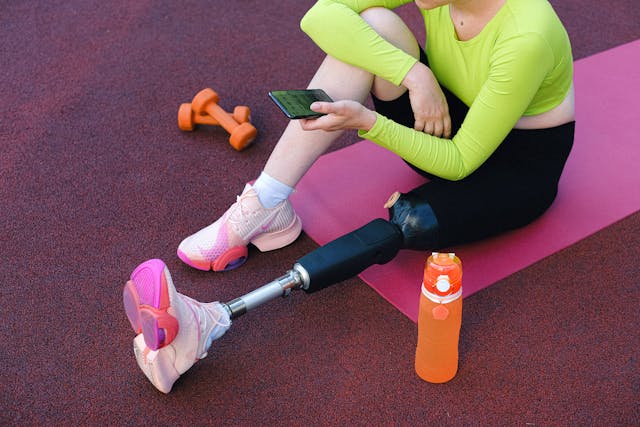
Regardless of which prosthetic is chosen, daily practice is essential for seamless integration into everyday life. Rehabilitation specialists introduce task-specific training, where users practice real-world activities like tying shoelaces, using utensils, typing on a keyboard, or carrying bags. These exercises help users feel more confident and independent in their daily routines.
At Robobionics, we provide comprehensive rehabilitation programs tailored to each user’s needs. Our training sessions focus on muscle control, grip strength, and functional adaptation, ensuring that users can confidently incorporate their prosthetic into everyday life.
Maintenance and Care: Ensuring Long-Term Prosthetic Performance
Whether you choose a body-powered or myoelectric prosthetic, proper maintenance is essential to ensure durability, comfort, and consistent functionality. Regular care helps prevent malfunctions, reduces wear and tear, and extends the lifespan of the prosthetic. Since both types of prosthetics operate differently, their maintenance needs also vary.
Caring for a Body-Powered Prosthetic
Body-powered prosthetics are known for their durability and simple mechanical design, making maintenance relatively straightforward. However, since these prosthetics rely on cables, pulleys, and harnesses, regular inspections are necessary to ensure smooth operation.
One of the most important aspects of care is checking the cable system for signs of wear, fraying, or looseness. Over time, the tension in the cable may change, which can affect the responsiveness of the prosthetic hand. If the cable becomes too loose, the user may struggle to open or close the hand properly. Adjustments or replacements should be made as needed to maintain optimal performance.
Another key maintenance step is cleaning the socket and harness regularly. Sweat and dirt buildup can cause discomfort and lead to skin irritation. Wiping down the socket with a damp cloth and mild soap helps keep it clean, while harnesses should be washed or replaced periodically to ensure hygiene and comfort.
Since body-powered prosthetics experience physical strain from repetitive movements, all mechanical components should be lubricated and inspected for smooth functionality. Any squeaking or stiffness in the joints or hinges may indicate that the prosthetic needs servicing.
Maintaining a Myoelectric Prosthetic
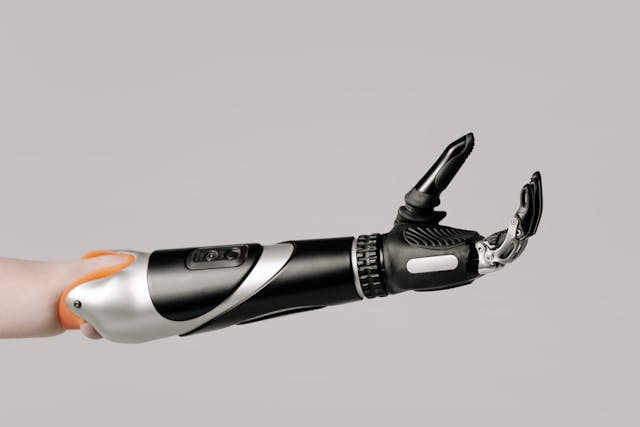
Myoelectric prosthetics contain electronic components, sensors, and motors, making their maintenance slightly more complex than body-powered options. Since these prosthetics rely on muscle signals and battery power, extra care is needed to ensure they remain responsive and functional.
One of the most important maintenance tasks is keeping the electrodes clean. Sweat, dirt, and oils from the skin can interfere with signal detection, leading to delayed or inconsistent hand movements. Cleaning the electrodes with a dry or slightly damp cloth helps maintain good connectivity and responsiveness.
Battery management is another crucial aspect of myoelectric prosthetic care. Users should develop a routine for charging the prosthetic regularly to prevent power loss during use. Some advanced models have battery level indicators, allowing users to monitor battery status and avoid unexpected shutdowns. If the prosthetic is not being used for an extended period, it’s best to store it with a partially charged battery to maintain battery health.
The socket and prosthetic hand should also be inspected for cracks, loose parts, or motor noise. Since myoelectric prosthetics contain delicate motors and moving parts, any unusual behavior—such as lag in response time or weak grip strength—should be addressed by a prosthetist immediately. Regular software updates and calibration may also be required to ensure smooth and precise operation.
When to Seek Professional Servicing
While minor maintenance tasks can be performed at home, some issues require professional servicing. If a user experiences reduced functionality, discomfort, or mechanical failure, it’s important to consult a prosthetist for adjustments or repairs.
For body-powered prosthetics, common signs that servicing is needed include cable stiffness, excessive resistance when operating the hand, or broken harness components. A prosthetist can replace worn-out parts and fine-tune the cable tension to restore full functionality.
For myoelectric prosthetics, professional assistance is necessary if the electrodes stop detecting muscle signals properly, if the grip strength weakens, or if there are charging or battery issues. A technician can recalibrate the sensors, replace worn-out batteries, and update the prosthetic’s software for improved performance.
At Robobionics, we provide comprehensive maintenance services to ensure that users get the most out of their prosthetic limbs. Our team offers routine check-ups, troubleshooting, and repairs to keep prosthetics functioning at their best.
Conclusion: Finding the Best Fit for Your Lifestyle
Both body-powered and myoelectric prosthetics offer unique advantages for below-elbow amputees. The best choice depends on individual needs, lifestyle, and functional priorities. Whether you seek strength and reliability or advanced control and aesthetics, there is a prosthetic solution that fits your requirements.
At Robobionics, we specialize in custom prosthetic solutions designed for comfort, durability, and performance. Contact us today for a consultation to explore the best prosthetic options for your needs and take the next step toward enhanced mobility and independence.



